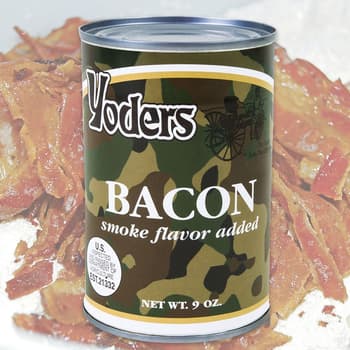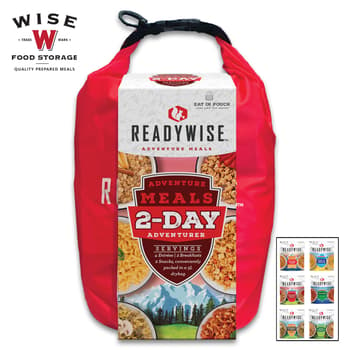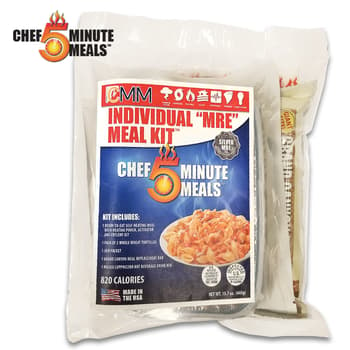Feeding Your Family After SHTF
By Adelia Ladson
As you know, there are no guarantees about future events. There is no guarantee that SHTF won’t happen tomorrow. These are things beyond your control. What is not beyond your control is that you can guarantee that you and your family have food to survive when push comes to shove. Now, that is a guarantee you need to get behind and take seriously. The only way to do this is to make sure that you are food independent.
One of the most basic ways to start your independence journey from commercial food sources is to get in touch with the earth. Plant a survival garden. Take some space in your backyard to use but it doesn’t have to be a plot that takes up your entire backyard. Especially, when you’re just getting started. You want to make it manageable and simple. The key to starting a garden is making a plan, by using knowledge that you have acquired on the things that you want to grow. You need to choose vegetables that will thrive where you live. This is important to your garden’s success. Once you’ve made your gardening plan, you need to put it into action. In other words, do it now! Don’t wait until SHTF starts because that is way too late. Gardening is something that needs to be practiced and done through trial and error. You need time to learn and adapt your plan, based on the results and reality of your individual garden plot and its environment. You won’t know this until you’ve been through a season with your garden. I suggest the Wise Heirloom Vegetable Seed Bucket to get you started.
When you have your garden growing and producing vegetables, you can really start enjoying the yummy goodness that goes straight from your garden to your kitchen. Nothing beats a truly fresh tomato or cucumber. But when you’re in it for the long haul, you need to make sure that you can enjoy that yummy goodness all year round or when your tomatoes just didn’t make it, which no matter how much you plan, can happen. You need to plan for the future and the best way to do this is to preserve a percentage of your vegetables by canning or freezing them. Don’t, however, just depend on freezing them because that won’t help you if it comes down to a no electricity scenario. Pair freezing with another method. Even if you have a good generator plan in place, I wouldn’t risk it.
Freezing is probably the most common and simple way to preserve vegetables. For example, all you have to do with tomatoes are blanch them a little to help loosen the peel, put them in cold water and then put them whole in plastic freezer bags (These are great for soups and sauces during the winter). Many vegetables can be done exactly the same way.
Canning is one of the traditional ways of preserving food and is a process that requires a little more work because it’s a little more entailed. Canning is, basically, using heat to process foods in airtight, vacuum-sealed containers, like glass jars, so that you can store them in your pantry. When you look for resources on the process of canning, you will see instructions for using a pressure canner and a boiling-water canner. The method you use depends on the acidity in the food you are using. Do not take shortcuts, no matter what you see about using a microwave, the dishwasher or even the oven. Stick to the two tried and true methods above and make sure you follow the directions precisely. This assures that all of your hard work in the garden is not spoiled (literally) by flawed canning methods. I recommend the Canning Essentials book because it’s the complete, go-to beginner’s guide to food preservation. It will take you step-by-step through the processes of canning fruit and other produce, as well as, how to make homemade jelly. From canning vegetables to preparing more than 60 delicious recipes for homemade jam, salsa, and relish, this book simplifies the processes of pressure canning and water-bath canning.
And speaking of canning, you really need to invest in some canned staples to stock your pantry with and I mean with things like butter, honey and flour. We’ve found some really great products including Powdered Butter and Powdered Honey that have a 25-year shelf-life. Another great product is the Augason Farms Bakery Kit, which gives you an institutional-sized can of powdered biscuit mix, pancake mix and bread mix, all with a 10-year shelf-life.
Along the lines of canning vegetables, you can also add smoking and curing meat to your knowledge and start stocking your pantry for when fresh meat isn’t readily available. You also need to add hunting skills or raising livestock to your “survival tool box” of knowledge because eventually your pre-SHTF stores of meat will run out. If you live in the suburbs of a large city, or actually in the city and plan on staying there after SHTF, unless, you want to become a vegetarian, these are things that you need to think about ahead of time. A good resource that I’ve found on the art of smoking and curing meats is the Home Smoking And Curing Meat, Fish and Game book. With just some basic ingredients and equipment, it teaches you how to salt, cure, air dry and smoke your way to wholesome deliciousness. It shows you how to setup your own smoker, prepare salt and brine cures and air dry meats and fish. Plus, it’s easy-to-follow and has great illustrations.
Now, let’s talk about foraging for food, which is basically going out and harvesting edible plants right around where you live. This should not be your sole source of food. I mean, common sense tells you that you cannot feed your family on just found food. However, this is still a good skill to develop because you can add augment your food supply with things that you don’t have to grow yourself. Especially, when it comes to herbs, fruits, nuts and mushrooms, which are things that should be added to your family’s diet. The Foraging for Wild Foods Guide is a comprehensive and well-illustrated introduction to foraging. Most of these foods are within easy reach, however, you've got to know what you’re looking for and where to go and when. You don’t want to poison yourself or your family because you picked something inedible.
There are so many great resources out there to get all the knowledge that you need to get on your way to being food independent. It’s just a matter of making that effort to do the research, make your plan and then follow through. A word to the wise, though, make sure that you also stock and store some back-up and fill-in meals-ready-to-eat. You never know how your garden will do from season to season and you could have a situation where you are forced to bug-out instead of sheltering-in-place. Just make sure that you’re always prepared!




